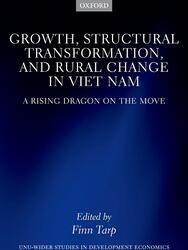Book
Growth, Structural Transformation, and Rural Change in Viet Nam
A Rising Dragon on the Move
This is an open access title available under the terms of a CC BY-NC-SA 3.0 IGO licence. It is free to read at Oxford Scholarship Online and offered as a free PDF download from OUP and selected open access locations. The household survey data used in this book is available here.
Many developing countries – Viet Nam included – continue to struggle to raise incomes per capita. A common feature of the growth and development process is a fundamental change in the pattern of economic activity, as households reallocate labour from traditional agriculture to more productive forms of agriculture and modern industrial and service sectors. Broad structural transformation and widespread poverty reduction is the combined result of these large-scale shifts in work and labour allocation when they realise desired development goals.
The roots of this volume grow from when the first pilot Viet Nam Access to Resources Household Survey (VARHS) was carried out in 2002. The success of this inspired the Central Institute of Economic Management (CIEM) in Hanoi, the Institute of Policy and Strategy for Agriculture and Rural Development (CAP-IPSARD), the Institute of Labour Science and Social Affairs (ILSSA), and the Development Economics Research Group (DERG) of the University of Copenhagen, together with Danida and later on UNU-WIDER, to plan and carry out a more ambitious VARHS from 2006, increasing coverage and representativeness to more than 2,150 families and 12 provinces across the various regions of Viet Nam.
The VARHS covering these very same households had by 2014 been carried out five times, i.e. every two years. It is on this high quality panel data foundation and almost 15 years of study and policy work using the VARHS data the present volume builds, in its effort to bring out the essential rural micro-economic characteristics and insights of a dynamic South-East Asian economy in transition from a centrally planned towards a more market based economy.
 Join the network
Join the network